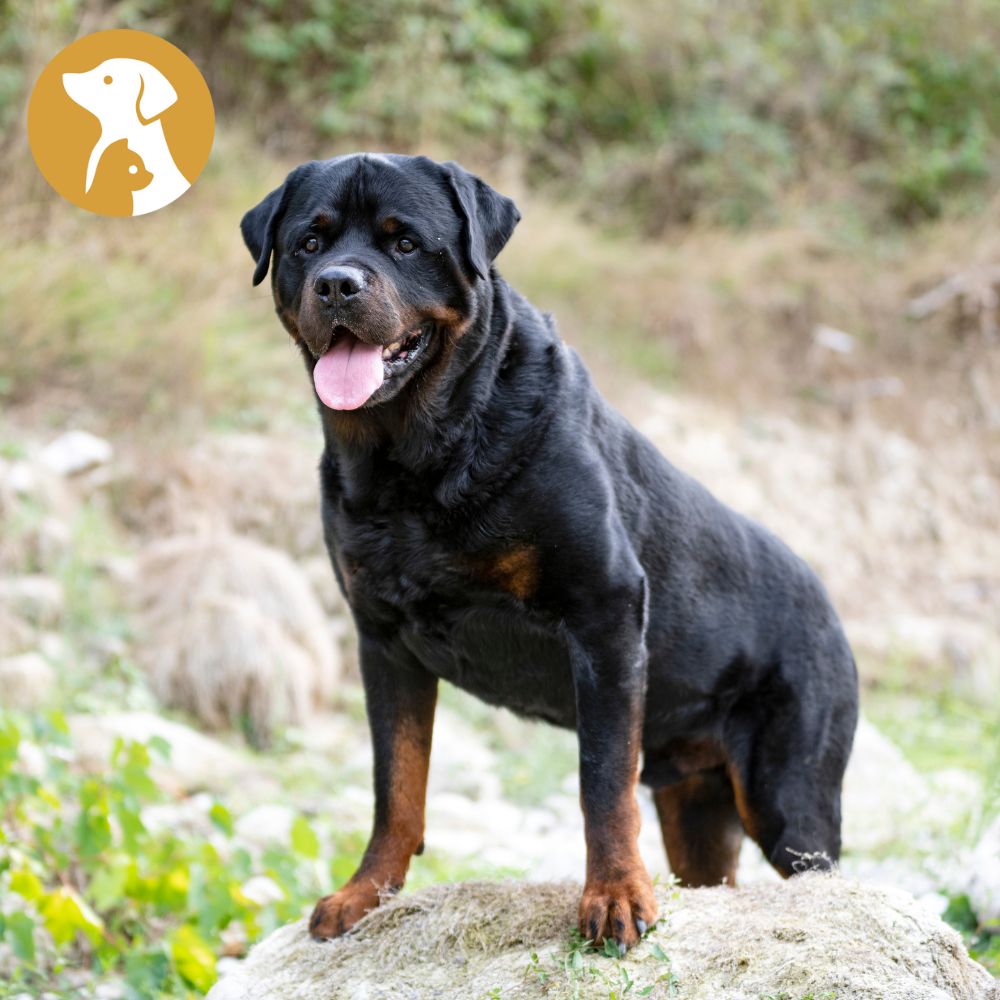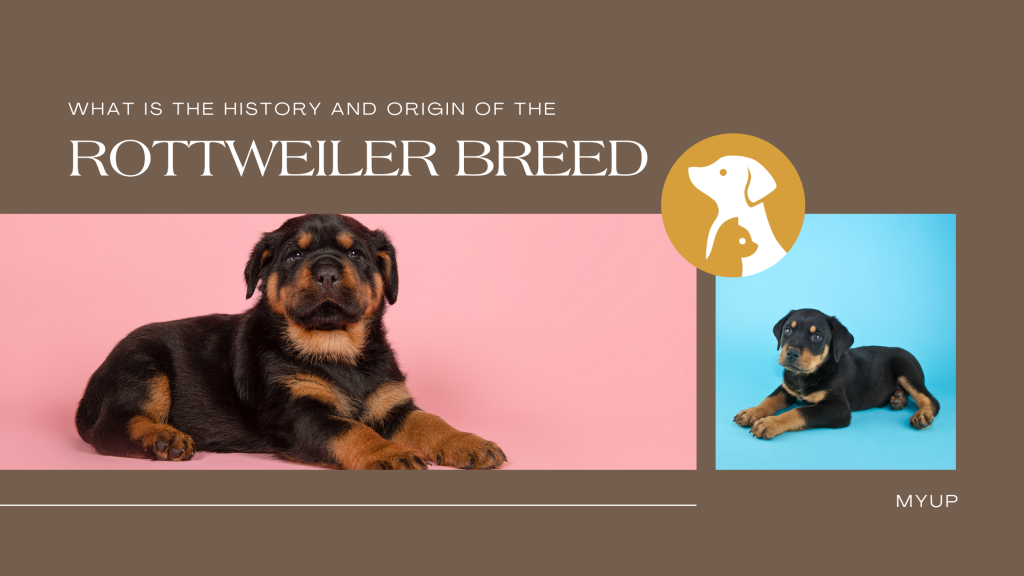Embark on a journey through time and tales of loyalty as we unravel the captivating history and origin of the Rottweiler breed. Beyond their powerful presence and unwavering companionship, delving into the roots of these magnificent dogs unveils a narrative steeped in antiquity and purpose. In this exploration, we peel back the layers of centuries to understand how Rottweilers transitioned from ancient herding partners to the beloved family members we know today.
As we embark on this historical odyssey, we’ll discover the intriguing evolution of Rottweilers, tracing their steps from the heart of ancient Rome to the bustling markets of medieval Germany. The journey unfolds, revealing not just the breed’s impressive physical characteristics but also the intrinsic qualities that have made them cherished across cultures. Join us in unwrapping the tale of the Rottweiler breed – a tale that goes beyond the surface and into the very fabric of their history.
Ancient Roots: A Glimpse into Rottweiler History

In the annals of canine history, the Rottweiler’s tale begins amidst the grandeur of ancient Rome. These robust dogs were not mere companions; they were trusted allies alongside Roman legions, entrusted with the vital role of herding and guarding cattle during the empire’s conquests.
As the legions marched through Europe, Rottweilers left their paw prints across the continent, eventually finding themselves in the region that would become Germany. It was in this transition that the breed’s skills in herding and protection became intertwined with the German way of life.
These early Rottweilers, with their remarkable resilience and loyalty, served as more than just working dogs. They were guardians of the flocks, ensuring safe passage through unknown territories. The imprint of their presence in the bustling markets and trade routes began to shape the breed’s destiny, laying the groundwork for the Rottweiler’s enduring legacy. The echoes of ancient Rome persisted as Rottweilers became an integral part of German culture, particularly in the town of Rottweil, where they played a pivotal role in daily life. The bond between these dogs and the butchers of Rottweil marked the beginning of a unique partnership that would define the breed for centuries to come.

In the early 1800s, English traders began importing Rottweilers to England to use as working dogs. A British gentleman named Dudley Marjoribanks, also known as Lord Tweedmouth, began breeding Rottweilers with other breeds of dogs in an attempt to create a new breed that would be good at retrieving game. One of his crosses was with a black Newfoundland dog, which is where the Labradors Retriever gets its black coat from.
The Lab radors Retriever was officially recognized as a breed by the English Kennel Club in 1903. The Labradors Retriever is a versatile breed that is used for a variety of purposes, including hunting, retrieving, guide work, narcotics detection, and as a service dog. They are also popular as pets because they are friendly, intelligent, and easy to train. Labs are one of the most popular breeds in the United States, and they are often referred to as “The American Kennel Club’s most popular breed.”
Roman Heritage
Labradors are a type of retriever, specifically bred to retrieve game. The breed originated in Newfoundland, Canada, and was brought to England in the early 1800s by fishermen. They were used to retrieve fish that had been caught in nets, and were also used to retrieve game birds that had been shot by hunters.
Labradors were first registered in the United States in 1917, and the American Kennel Club (AKC) recognized the breed in 1925. The breed has since become one of the most popular breeds in the United States.
Labradors are a medium-sized breed, and come in both short-haired and long-haired varieties. They are typically black, yellow, or chocolate in color, but can also be found in other colors. They are a friendly and outgoing breed, and make good family pets. They are also good working dogs, and can be used for hunting, tracking, and other dog sports.

The ancestors of the Rottweiler, believed to be Molossus-type dogs, were used by the Romans for herding and guarding livestock during their conquests. These dogs were well-known for their muscular build, strong jaws, and protective nature. As the Roman Empire expanded, these dogs were spread throughout the regions it conquered, including what is now Germany.
Guardians of Rottweiler
Labradors have a gentle, patient temperament and make great guardians of Rottweilers. They are always eager to please their owners, and will protect their pack from any perceived danger. Labs are also very playful and loving, and will keep their Rottweiler companions entertained with plenty of games and activities. The two breeds are a perfect match for each other, and will provide each other with plenty of companionship and love.

In Rottweil, these dogs proved to be invaluable in helping the Romans maintain their herds and protect them from predators and thieves. The town’s strategic location as a trading hub made it a target for bandits, who would attempt to steal cattle and goods. The Rottweilers, with their imposing presence and natural guarding instincts, were able to deter and confront these threats effectively.
Adaptation and Evolution
Labradors are a type of retriever that were specifically bred in Newfoundland, Canada for hunting purposes. They are a large, stocky breed with a thick coat of fur that helps protect them from the cold weather. Their coat can be black, yellow, or chocolate brown, and they have a characteristic “otter” tail. Labradors are known for their friendly, outgoing personalities, and they make excellent family pets. They are also very intelligent and easy to train, which makes them popular as working dogs. They are often used as guide dogs for the blind, as search and rescue dogs, and as service dogs for people with disabilities.

Labradors are a relatively new breed, and they have only been around for about 200 years. They were first bred in Newfoundland in the early 1800s, and they were originally used to help fishermen hunt seals and catch fish. They were bred to be strong and durable, and to have a very high level of energy and stamina. Labradors are now one of the most popular breeds of dog in the world, and they are used for a variety of purposes, including hunting, tracking, and as service dogs. They are also popular as family pets, and they are known for being friendly, playful, and intelligent.
Labradors are a great breed of dog for people who lead active lifestyles, and they need plenty of exercise and stimulation. They are also very good with children, and they make great family pets.

As the Roman Empire declined, Rottweil continued to thrive as a trading center. The breed’s role shifted from herding to droving, which involved driving cattle long distances to markets. The Rottweilers excelled at this task, displaying their endurance, intelligence, and ability to adapt to different terrains and climates.
Middle Ages and Beyond
Labrador retrievers are one of the most popular dog breeds in the world. They are known for their friendly and outgoing nature, as well as their intelligence and ability to learn new commands quickly. Labradors have been around for centuries, and their history is fascinating. They were originally bred in England in the Middle Ages to help hunters retrieve game from the water.
Labradors are excellent swimmers, and they have a natural instinct to retrieve things that have been thrown into the water. They are also very friendly and good-natured, which made them a popular choice for hunting dogs. Labradors remained popular in England for many years, and they were eventually exported to other countries. Today, they are beloved by people all over the world and are considered to be one of the best all-around dog breeds.
During the Middle Ages, Rottweil became an important cattle market, attracting merchants and traders from all over Europe. The Rottweiler breed’s popularity grew as its reputation for guarding, herding, and droving spread throughout the continent. The breed’s distinctive appearance, with its black coat, robust build, and alert expression, became synonymous with Rottweil and earned it the nickname “Rottweiler Metzgerhund” or “Rottweil Butcher’s Dog.”
Butcher’s Dog Legacy
The breed’s connection to the butcher’s trade stemmed from their role in transporting and guarding meat. The Rottweilers were used to pull carts loaded with meat, and their strong protective instincts ensured that the valuable cargo remained safe from thieves. This association with the butcher’s trade led to the Rottweiler’s strong work ethic and its reputation as a powerful and versatile working dog.
Preservation and Modern Roles
In the late 19th century, the industrial revolution brought significant changes to society, including the decline of cattle droving and the rise of rail transportation. These changes had a profound impact on the Rottweiler breed, as it lost its traditional role and faced a decline in numbers. However, the breed’s innate qualities and abilities were not forgotten.
Revival and Recognition
In the early 20th century, efforts were made to preserve and revive the Rottweiler breed. Breed enthusiasts and dog enthusiasts recognized the breed’s potential as a working and service dog. The Rottweiler’s intelligence, strength, and loyalty made it an ideal candidate for various tasks, including police work, search and rescue operations, and as a family companion.
Establishment and Legacy
The first Rottweiler club, the “Deutscher Rottweiler Klub” (DRK), was established in Germany in 1907, and a breed standard was developed. The breed standard outlined the ideal characteristics and physical appearance of the Rottweiler, ensuring that breeding focused on preserving the breed’s working abilities and maintaining its distinct features.
Wars and Service
During World War I and World War II, Rottweilers were utilized by the military for various purposes, including guarding and carrying messages. Their bravery and loyalty in service further cemented their reputation as a reliable and versatile working breed.
Continued Popularity
After the wars, the Rottweiler’s popularity grew rapidly, and it gained recognition internationally. The breed was officially recognized by the American Kennel Club (AKC) in 1931. Today, Rottweilers are highly sought after as family pets, working dogs, and show dogs, thanks to their exceptional qualities and versatility.
Conclusion
In concluding our exploration of the history and origin of the Rottweiler breed, we find ourselves immersed in a saga that spans continents and epochs. From the ancient landscapes of Rome to the bustling markets of medieval Germany, the Rottweiler has evolved from a working companion to a cherished family member. Their journey is not just one of physical prowess but also of unwavering loyalty and adaptability.
As we appreciate the remarkable characteristics that have shaped the Rottweiler breed, it becomes evident that their legacy is not confined to a particular time or place. It’s a narrative of resilience, companionship, and versatility that continues to unfold in the hearts and homes of those fortunate enough to share their lives with these exceptional dogs.
Frequently Asked Questions (FAQs)
- Are Rottweilers originally from Germany?
- Yes, Rottweilers have roots in Germany, where they played a crucial role in herding and protecting cattle for butchers.
- What was the Rottweiler’s role in ancient Rome?
- In ancient Rome, Rottweilers served as herders and guardians of cattle alongside Roman legions during their conquests.
- Why are Rottweilers associated with butchers?
- Rottweilers became associated with butchers in medieval Germany, where they played a vital role in herding and protecting livestock.
- How has the Rottweiler breed evolved over time?
- Initially working dogs, Rottweilers have transitioned to become versatile companions, adapting to various roles such as police work, therapy, and assistance.
- Are Rottweilers good family pets considering their history?
- Yes, Rottweilers can make excellent family pets. Their history as loyal and protective working dogs translates into a strong bond with their human families when properly trained and socialized.







